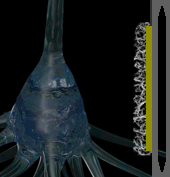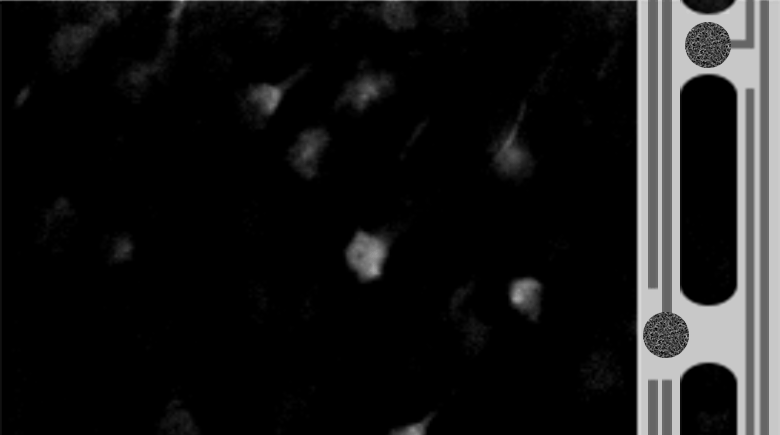Takashi D.Y. Kozai, Kasey Catt, Zhanhong Du, Kyounghwan Na, Onnop Srivannavit, Razi-ul M. Haque, John Seymour, Kensall D Wise, Euisik Yoon, X. Tracy Cui, University of Pittsburgh, University of Michigan, ePack, Inc, Structured Microsystems LLC, USA,
Sub-cellular sized chronically implanted recording electrodes have demonstrated significant improvement in single-unit (SU) yield over larger recording probes. Additional work expands on this initial success by combining the subcellular fiber-like lattice structures with the design space versatility of silicon microfabrication to further improve the signal-to-noise ratio, density of electrodes, and stability of recorded units over months to years. However, ultra-small microelectrodes present very high impedance, which must be lowered for SU recordings. While poly(3,4-ethylenedioxythiophene) (PEDOT) doped with polystyrene sulfonate (PSS) coating has demonstrated great success in acute to early-chronic studies for lowering the electrode impedance, concern exists over long-term stability. Here, we demonstrate a new blend of PEDOT doped with carboxyl functionalized multi-walled carbon nanotubes (CNTs) which shows dramatic improvement over the traditional PEDOT/PSS formula. Lattice style subcellular electrode arrays were fabricated using previously established method. PEDOT was polymerized with carboxylic acid functionalized carbon nanotubes onto high impedance (8.0±0.1 MΩ: M±S.E.) 250 µm2 gold recording sites. PEDOT/CNT coated subcellular electrodes demonstrated significant improvement in chronic spike recording stability over four months compared to PEDOT/PSS recording sites. These results demonstrate great promise for subcellular sized recording and stimulation electrodes and long-term stability. This project uses leading-edge biomaterials to develop chronic neural probes that are small (sub-cellular) with excellent electrical properties for stable long-term recordings. High density ultrasmall electrodes combined with advanced electrode surface modification are likely to make significant contributions to the development of long-term (permanent), high quality, and selective neural interfaces. www.BIONICLab.org
Keywords: Conductive Polymer, Brain-computer interface, multi-electrode array, neuroprosthetics, Neural Interface.


